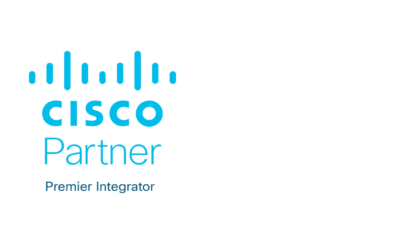Originally posted on MSPToday.
Modern Managed Service Providers (MSPs) are expected to keep their customers up to date when it comes to adopting and implementing innovative digital devices and applications. Most often as an extension of their customers’ IT team, or as the IT team themselves, MSPs can deliver a wide range of services, including network and infrastructure management, security, and monitoring.
Real-time communications (RTC), including voice, video, messaging, and collaboration, has always been the category that is most difficult to manage when it comes to quality and performance guarantees, with minimal latency and without transmission delays. In a world where the enterprise perimeter has been changing dramatically, organizations have never been more dependent on RTC services working, and not just predictably but in high definition.
Especially in highly regulated industries, such as healthcare, finance, and e-commerce, real-time communications sessions are themselves regulated, as sensitive information is being shared, and the availability of quality audio and video in mission critical situations can mean the difference between life and death. This is where observability at the edge comes in, which means that MSPs and the IT teams they support in large enterprises, can see exactly what is happening at the edge of the network – on every local Wi-Fi or other network – and on every device that connects employees with customers or private enterprise databases and systems.
“When enterprises in regulated industries are not looking after what is happening over their RTC networks, they are creating data governance challenges and exposing their organizations to what could be catastrophic consequences and even fines,” said Jeff Li, Senior Director of Risk, Governance, Projects, and Partners at ConnX, a global MSP firm serving Fortune 500 companies including those in mission critical industries. “Today’s data flows are dynamic, including conversational data, and with a more distributed workforce, working from home or while traveling, complexity and risks grow, and data becomes more vulnerable to cyberattacks and more.”
Li explained that more people working with data, and data-rich, cloud-based applications, means more risk of unexpected changes to data that can decrease data quality.
“As different roles have different expertise and confidence around data, things can quickly start to go wrong,” Li said. “With observability at the edge, we can detect and control even the most granular anomalies, there is protection of data quality especially when enterprises can troubleshoot swiftly, shut down broader problems, and eliminate compliance issues associated with regulations including PHI, HIPAA, and even Dodd-Frank.”
To achieve the levels of end-to-end observability necessary for organizations in these regulated industries, MSPs must ensure that their RTC offerings are not only fast, high quality, and secure, but also automated and intelligent.
“Here at ConnX, we have been using Artificial intelligence (AI), deep machine learning (ML) software embedded into our service platform and have proven we are able to both improve the user experience while also keeping the network, applications, and data safe and secure, from the edge to the network to the cloud,” Li said.
“We have built national and global communications platform, which include the collaboration apps of our customers’ choices, for example Microsoft Teams, which we make available, predictable, extremely high quality, and super secure when we pair that app with SIP Trunking as a Service,” Li said. “Working with partners like Juniper, we have doubled down on the adoption of AI at the edge, which has been tremendously valuable for all industries, especially highly regulated industries like healthcare and BFSI, which have had the greatest challenges when it comes to allowing employees to work from home. They are far more willing to offer flexible working models when they know – for sure – that every call, every video conference, every text message, and more can be seen, heard, and fully protected. Why? Because our observability capabilities make it clear.”
For example, many healthcare professionals and organizations are already using HIPAA-compliant automated text messaging solutions. These applications are an immense help for doctors, nurses, and other hospital staff in streamlining the efficiency of their patient care, while also helping them improve workflows, minimize interruptions and many other benefits.
“In addition, a single dedicated communications platform can help staff communicate with each other and with patients more effectively, as the popularity of telemedicine continues to surge, while still being HIPAA-compliant and avoiding steep fines,” Li explained.
Furthermore, hospitals, physicians and insurance facilities are adopting different secure messaging apps for healthcare internal needs. Such applications are modeled after the simplicity of consumer instant messaging solutions and are built to be HIPAA complaint.
“The ability to share records and documents between offices and networks without costly VPNs, while meeting regulatory compliance requirements, offers immense benefits for centralizing and streamlining health records while maintaining data privacy and security,” according to Li.
As for financial institutions, these organizations must handle massive amounts of personally identifiable information that is worth top dollar on the dark web. The Dodd-Frank Act requires that financial institutions record all customer communications and is designed to protect customer information by requiring that companies keep meticulous records of transactions for auditing purposes.
“With automated capabilities via AI-powered RTC platforms, finance organizations are reshaping risk and compliance management by leveraging broad sets of data, often in real time, and automating compliance decisions, which has improved compliance and reduced costs. This now includes data being generated at the edge and protected with our AI Assure and Active Assure SD-WAN,” Li said. “On top of this, conversations between customers and employees can be automatically recorded, stored, and retrieved, when necessary, regardless of whether they are through email, voice, video, or instant messaging – all in a single, always-on and always-protected environment that works across even the most distributed physical footprints.”
Overall, regulatory compliance is growing more challenging by the day, and while no technology offers a cure-all solution to every potential challenge facing today’s compliance officers, AI-powered RTC is giving organizations the ability to improve their observability and efficiency while staying compliant.
For MSPs, this shift means they must start recognizing that outdated and low-security methods of communication are not cutting it anymore for heavily regulated enterprises and seek to enhance their RTC offerings to include the next wave of automated and intelligent communication capabilities.









